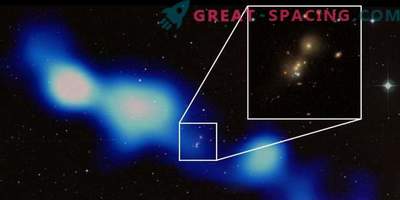
The Hubble telescope image shows the Pinwheel, a large-scale galaxy - one of the most famous examples of “grand spirals”. This is the largest and most detailed image of a spiral galaxy from a telescope.
Scientists have found that all galaxies rotate once in a billion years, regardless of their enormity. The Earth rotates around its axis, giving us the length of the day, and the full orbit around the Sun gives a year.
Of course, this is not the accuracy of Swiss watches. However, regardless of their galactic size, it takes galaxies 1 billion years to travel all the way. Using conventional mathematical formulas, it can also be shown that all galaxies of the same size have the same average internal density.
Identifying this pattern allows a better understanding of the mechanics of rotation. It will be difficult to quickly find a dense galaxy if the neighboring one is similar in size, but examples with lower density rotate more slowly. Also, researchers have obtained evidence of the formation of old stars on the edge of galaxies. In addition to the population of older stars, they noticed small groups of young objects and interstellar gas. This is an important result, because an understanding of where the galaxy ends allows us to limit our observations and not to waste time and computing power on studying data outside of a specific territory.
The next generation of radio telescopes will be able to operate with huge amounts of data, which will allow to know exactly where the edge of the galaxy is and reduce the computing power.











































